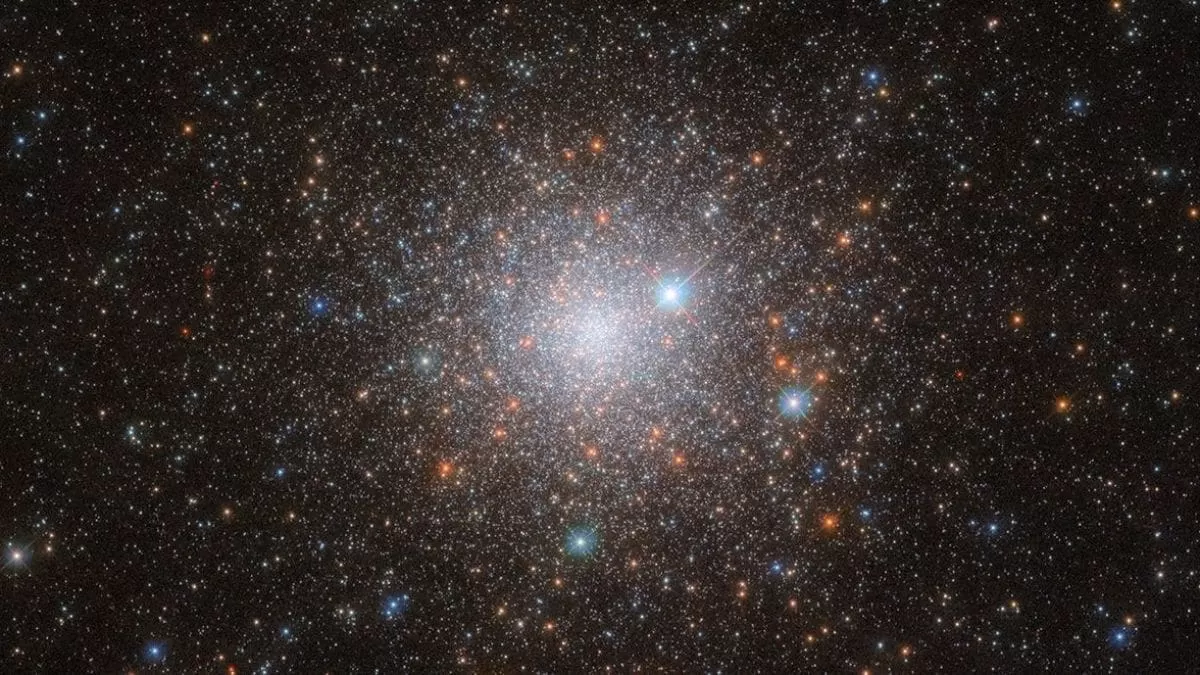NASA/ESA’s Hubble Space Telescope has once again captured the attention of the world with its latest release of a stunning new image of Abell 209, a massive galaxy cluster located 2.8 billion light-years away in the constellation of Cetus. This mesmerizing image not only showcases the beauty of this distant cluster, but also provides valuable insights into the mysteries of our universe.
The golden cluster of Abell 209 is a true marvel of the cosmos, housing over 100 galaxies, each containing billions of stars. But what makes this image even more remarkable is what lies beneath this cluster. Using the power of gravitational lensing, Hubble has revealed an invisible web of hot gas and dark matter that surrounds and permeates the entire cluster.
Gravitational lensing is a phenomenon predicted by Albert Einstein’s theory of general relativity, where the massive cluster of galaxies acts as a gravitational lens, bending and magnifying the light of background galaxies. This allows astronomers to study these distant galaxies in unprecedented detail, providing a unique window into the early stages of our universe.
In the image released by Hubble, we can see curved arcs of light from background galaxies, distorted and magnified by the immense gravitational pull of Abell 209. These arcs not only showcase the immense power of gravitational lensing, but also provide valuable information about the distribution of dark matter within the cluster.
Dark matter is a mysterious substance that makes up about 85% of the total matter in the universe, yet it cannot be directly observed. Its presence can only be inferred through its gravitational effects on visible matter. By studying the distorted arcs of light, astronomers can map the distribution of dark matter within the cluster, helping us to understand its role in the formation and evolution of galaxies.
Abell 209 is also a prime example of a galaxy cluster undergoing a process known as “galaxy cannibalism”. This is where smaller galaxies are pulled into the cluster and eventually merge with larger galaxies, creating a complex network of interactions and collisions. This process not only shapes the structure of the cluster, but also plays a crucial role in the evolution of galaxies.
The Hubble image of Abell 209 is a testament to the incredible capabilities of this iconic telescope, which has been in operation for over 30 years. Its ability to capture such detailed and awe-inspiring images from billions of light-years away is a testament to the dedication and expertise of the team behind this remarkable instrument.
But the impact of this image goes beyond just its scientific value. It serves as a reminder of the vastness and complexity of our universe, and the never-ending quest of humanity to understand our place in it. The beauty and mystery of Abell 209, captured by Hubble, inspires us to continue pushing the boundaries of our knowledge and to explore the wonders of the cosmos.
As we continue to unravel the secrets of the universe, images like this from Hubble will continue to amaze and inspire us. With each new discovery, we come one step closer to understanding the origins of our universe and our place within it. And with the advancements in technology and the dedication of scientists and engineers, we can only imagine what other mysteries and wonders await us in the depths of space.
So let us marvel at the stunning image of Abell 209, and let it be a reminder of the endless possibilities and discoveries that await us in the vastness of our universe. Thanks to the groundbreaking work of NASA/ESA’s Hubble Space Telescope, we can continue to expand our knowledge and understanding of the cosmos, and be inspired to reach for the stars.

